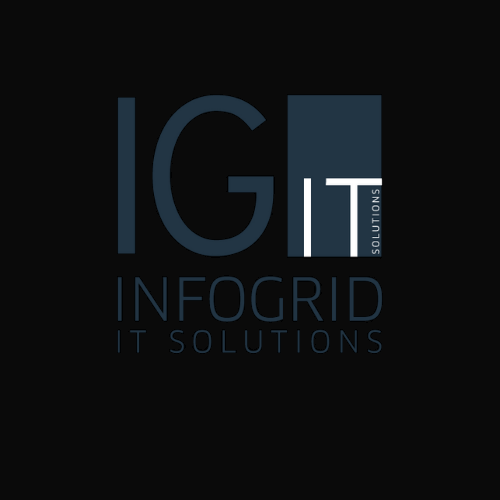Follow us on
© 2023 InfoGrid Bilişim Teknolojileri LTD. ŞTİ. Tüm Hakları Saklıdır.


Data storage systems are designed to securely store and manage data, encompassing hardware and software components. These systems utilize various technologies to operate in an active-active mode, provide quick access to data, and prevent data loss.
Addressing the growing data needs of businesses, these systems employ technologies such as NVMe, SSD and traditional storage disks, as well as traditional protocols like SAN and NAS, or ALL Flash technologies. They are specifically designed to ensure business continuity and efficient data management by focusing on crucial factors such as secure data, scalability, and performance.
All Flash NVMe
All Flash NVMe (Non-Volatile Memory Express) data storage systems stand out as a storage solution that provides high performance, low latency, and fast data transfer. NVMe operates more efficiently compared to traditional SATA and SAS interfaces, typically communicating over the PCIe (Peripheral Component Interconnect Express) interface. Key features of NVMe data storage systems;
- NVMe SSDs: SSDs that support the NVMe protocol deliver high performance with parallel read and write capabilities.
- Fast Data Transfer: NVMe enables fast data transfer with low latency and high bandwidth.
- High IOPS (Input/Output Operations Per Second): NVMe storage enables fast data access with high IOPS values, especially effective for applications that require intense input/output operations.
- Parallel Processing: NVMe can concurrently execute numerous operations with its multiple queues and parallel processing features.
- Low Power Consumption: NVMe SSDs typically use energy more efficiently, resulting in energy savings.
- End-to-End Data Management: The NVMe protocol enables end-to-end data management, ensuring more effective and optimized operation of storage systems.
- Wide Application Scope: End-to-end NVMe data storage systems are utilized in performance-critical applications, including areas such as data analysis, virtualization, artificial intelligence, and big data processing.
- Reliability: NVMe storage systems incorporate advanced error correction mechanisms and durability features.
End-to-End NVMe data storage systems contribute to faster and more efficient processing of workloads, particularly in application scenarios where performance is critical, in data centers, and in cloud environments.
All Flash SSD
All Flash SSD (Solid State Drive) data storage systems are high-performance, low-latency storage solutions that utilize flash memory-based storage technologies for processing and storing data. These systems offer a faster, more durable, and energy-efficient storage option compared to traditional mechanical hard disk drives. Key features of All Flash SSD data storage systems include:
- High Performance: All Flash SSDs enhance capabilities with high read and write speeds, enabling applications to operate more faster.
- Low Latency: SSDs, devoid of mechanical components, enable fast data access with low latency.
- Durability: SSDs are more durable as they lack mechanical components, making them more resistant to vibrations, shocks, and wear.
- Energy Efficiency: SSDs are more energy-efficient, leading to lower operational costs.
- High Capacity Options: With advancing technology, the capacities of SSDs have increased, providing a wide range of storage options for large datasets.
- Data Security: All Flash SSD storage systems ensure end-to-end data security through features such as data encryption, access controls, and other security measures.
- Heat Control: SSDs operate silently and tend to generate less heat since they lack spinning parts.
- Multi App: All Flash SSD data storage systems provide solutions for various applications, including virtual machines, databases, analytical applications, cloud services, and many more.
These features make All Flash SSD data storage systems an effective solution for performance-critical, high-density, and low-latency applications.
Protocol Base Solutions
SAN (Storage Area Network)
Storage Area Network (SAN) technology is a specialized block-based infrastructure designed to connect to a series of storage devices, integrating numerous servers and providing high scalability and top-tier performance. The data storage system can then be organized and effectively managed in the form of unified pools or tiers. SAN enables the business to centrally handle, replicate, and protect storage resources as a unified source. Key features include:
- Block-Based Storage: SAN delivers storage resources over a dedicated network. Protocols like Fibre Channel or iSCSI are commonly used for this purpose.
- High Performance: SAN is typically utilized as a high-performance storage solution. It is characterized by dedicated network connections and low latency.
- Centralized Management: Storage resources are managed centrally, allowing for effective monitoring and management of resources.
- Shared Storage and Virtualization: SAN can share and virtualize storage resources across multiple servers, enabling the efficient utilization of resources.
- Data Security: SAN has advanced features in terms of data security, including encryption and access control.
NAS (Network Attached Storage)
Network Attached Storage (NAS) technology is an integrated, file-centric storage solution that allows multiple authorized users and devices on a network to easily access data. Prominent features include:
- File-Based Storage: NAS provides file-based storage and is typically accessible over standard Ethernet protocols (TCP/IP).
- Ease of Use: NAS is easy to manage and focuses on file sharing.
- Centralized Data Storage: NAS stores data in a centralized location, allowing multiple devices to access this data over the network.
- Scalability: NAS has a scalable architecture and can be easily expanded by adding additional storage capacity.
İletişim :
- +90 216 706 56 02
- info@infogrid.com.tr
- Barbaros Mah. Lale Sok. My Office İş Merkezi No:2/13 Ataşehir/İstanbul
Site Haritası :
© 2023 InfoGrid Bilişim Teknolojileri LTD. ŞTİ. Tüm Hakları Saklıdır.

